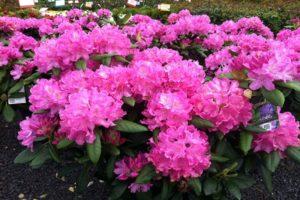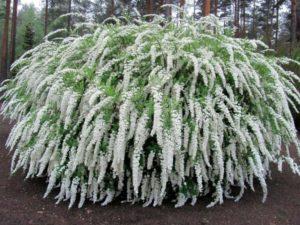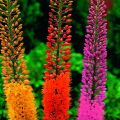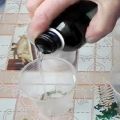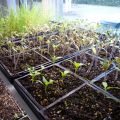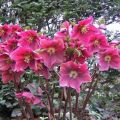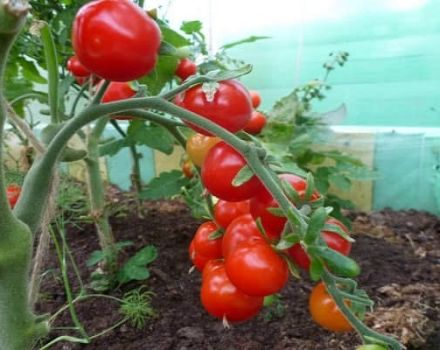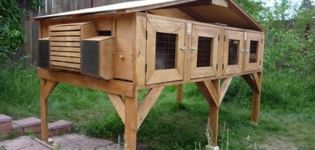Description of the types and varieties of garden poppy, planting and care in the open field
Garden poppy is popular with gardeners. The flowers of this culture, due to their bright color, will become an ornament for any suburban area. Poppy blooms for only a couple of days, however, by sowing seeds, you can get from two dozen plants that will bloom one after the other in turn, thus decorating the site for a month. Poppies are absolutely undemanding to planting and care.
Description
Poppy (Latin name Papaver) is a herbaceous plant that belongs to the Poppy family. The plant is rarely found in the northern regions. The varieties include both annuals and perennials. The stems reach one meter in height. The flowering period is short - the plant blooms for one or two days.
Growing features
The plant is unpretentious to air temperature, withstands both warm and cold temperatures. It is best to plant seeds in loose soil. The plant needs to provide good illumination and prevent liquid stagnation at the roots.
Varieties and varieties
There are various varieties and varieties of plants, differing from each other in terms of life, fruiting and external characteristics.
Alpine
This variety has white or yellow flowers. The stems reach a height of up to ten centimeters. Grown as a one to two year old plant.
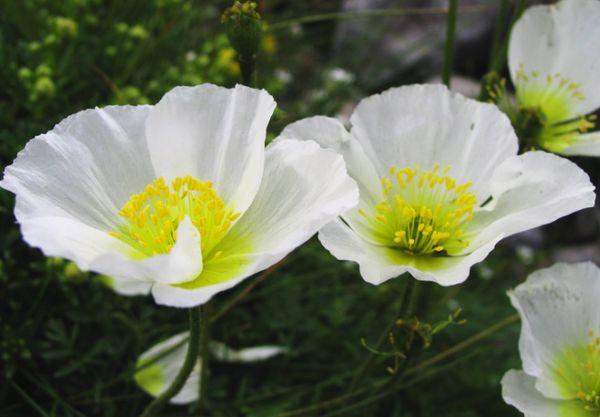
Holosteelny (Siberian)
A kind of alpine poppy, it grows in the valleys of Siberian rivers. It is characterized by early long flowering. The stems reach a length of 35 centimeters. The flowers take on shades of white, yellow and orange.
Shirley Self-Seed (Field, Wild)
The stems of this variety reach a height of half a meter, have a bristly covering. Flowers up to 10 centimeters in diameter, take on a solid color of various colors. Shirley blooms in late spring, early summer.
Oriental
Perennial variety. It is considered one of the most beautiful varieties. It reaches a height of one meter. The flowers are large in size and rich in bright red color.In addition, there are artificially bred subspecies that have flowers of various colors and textures.
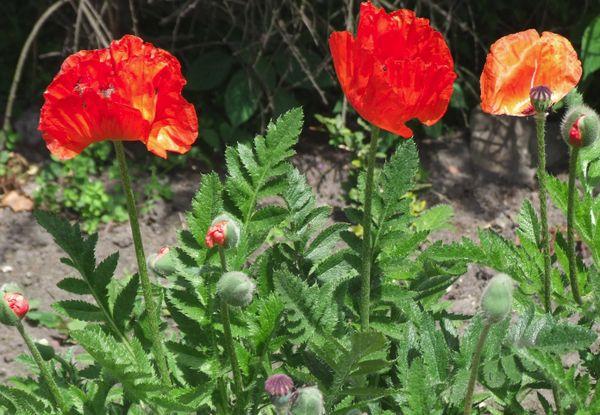
Decorative
The decorative poppy includes more than a hundred varieties, reaching a height of up to one meter. There are both annual, biennial and perennial subspecies. It is characterized by large flowers, resistant to temperature fluctuations.
Terry
This subspecies is also called peony. It is an annual plant. The stems reach a height of 90 centimeters. The flowers are large, double, similar in appearance to peony flowers. Most often pink, but there are varieties with a variety of shades.
Icelandic
It is a perennial plant. Flowers take on a variety of colors: white, yellow, red, pink. Flowering begins in May and lasts all summer, until autumn.
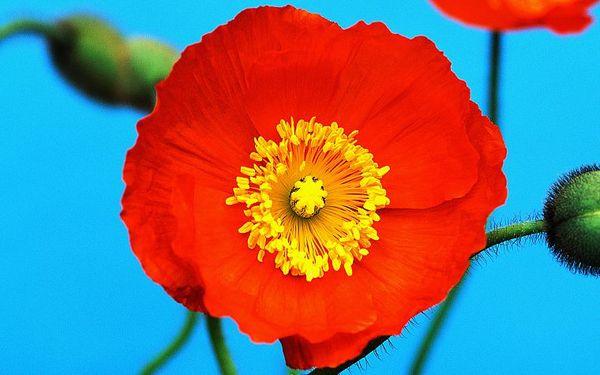
What is useful
Many people have the misconception that poppy is a drug. In fact, only the milk of immature plants has a psychotropic effect. The seeds have beneficial properties and are used for medical, culinary and cosmetic purposes.
Medicine
Poppy seeds contain medicinal substances.
Codeine
A substance used to fight coughs. Has an analgesic effect.
Papaverine
Antispasmodic; It is used to weaken the tone of smooth muscles of muscles and internal organs.
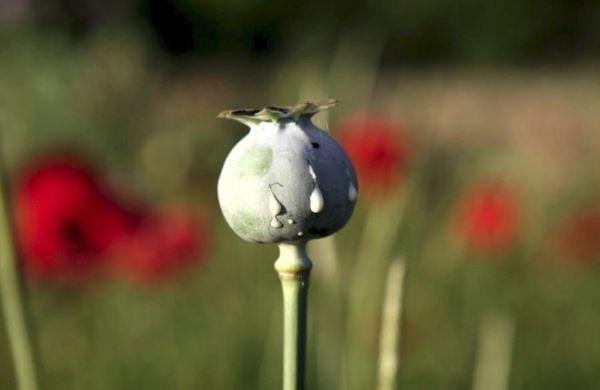
Morphine
Used in medicine as a powerful pain reliever. Extracted from the juice of the opium poppy.
ethnoscience
In addition to official medicine, poppy, thanks to its beneficial properties, has become widespread in folk medicine. The plant is used as an analgesic, hypnotic, and helps with diarrhea, fatigue and other diseases of the body.
Hypnotic
An infusion of boiled poppy seeds is used as a hypnotic. The seeds are infused in a thermos for three hours. The tincture is consumed before going to bed.
Pain reliever
In addition to sleeping pills, poppy has a strong analgesic effect. The seeds are added to food, their juices help to cope with headaches and accelerate the healing of the body after injuries or illnesses.
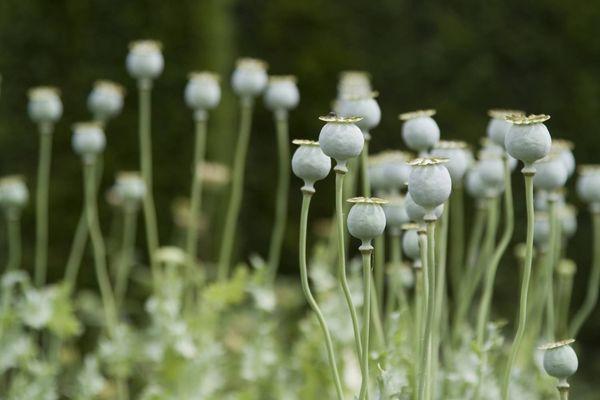
With diarrhea
The plant fibers contained in the seeds regulate stomach function, relieve constipation, help relieve abdominal pain and relieve diarrhea.
From tiredness
Poppy seed decoction, among other things, helps to reduce body fatigue.
For migraine
Poppy infusion is used to combat migraines and frequent headaches. Migraine is treated by taking an infusion three times inside in a volume of 50 milliliters.
Boost immunity
Eating poppy seeds helps to increase the body's resistance to disease. The seeds contain zinc, which helps to reproduce white blood cells and strengthens the body's defense against the invasion of bacteria.
With bronchitis and laryngitis
A decoction of poppy, thyme and violet helps to thin phlegm. One spoon of the mixture is poured with boiling water and infused for ten minutes.
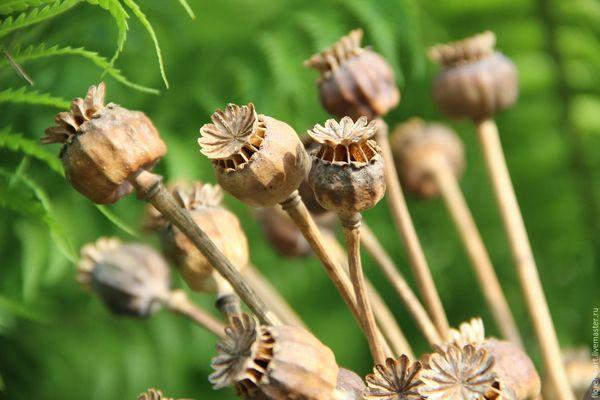
Stopping blood
Poppy-based preparations have a hemostatic effect, therefore they are used to stop bleeding.
Oncology
The seed extract is used in oncology to prevent the appearance of metastases.
Anti-sweating
Poppy-based preparations reduce excessive sweating.
Cooking
In addition to medicinal uses, poppy is widely used in cooking. The seeds have a spicy flavor and complement mushroom dishes and various sauces. Poppy seeds are widely used in the bakery and confectionery industry: buns with poppy seeds can be purchased at any supermarket.
Landscape design
Due to the unusually beautiful appearance, the flowers of the plant are used in landscape design.They will be a decoration for any summer lawn or garden area.
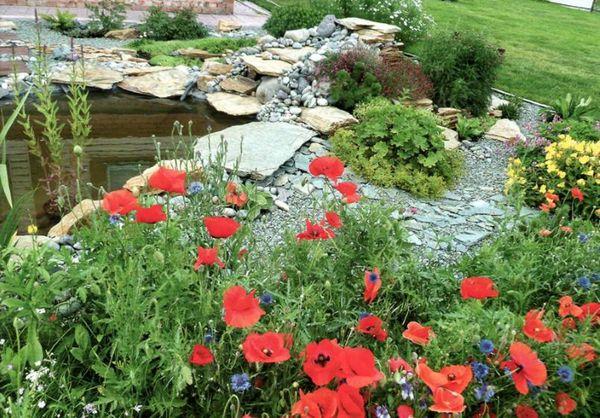
Cosmetology and creativity
The essential oils obtained from the seeds of this plant are widely used in cosmetology and are used to make homemade masks and body lotions.
Contraindications for use
Due to the opium content, the seeds can be addictive and have toxic side effects. It is not recommended to use poppy for food with individual intolerance, as well as with alcohol dependence, liver disease and heart failure.
Planting and leaving
Poppies are undemanding to the place of planting and care, however, compliance with some rules will allow them to develop better and bloom faster.
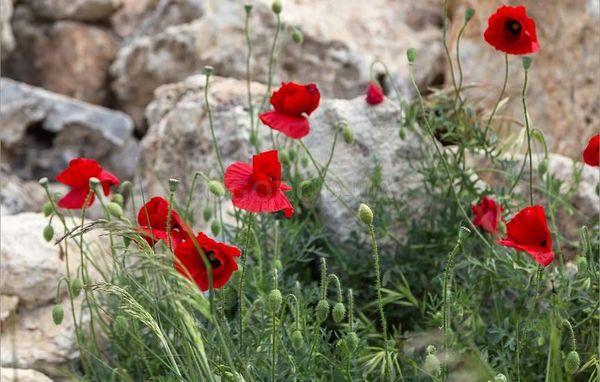
Seat selection
Poppy grows best in areas that are well lit by the sun. Most varieties require fertile soil, so the earth needs to be dug up with compost.
Timing
In regions with mild climates, seeds are sown in autumn or late winter. For sowing at a later date, the seeds must be kept in the refrigerator for two months.
Spring planting
In spring, poppy planting is carried out after the snow melts and the soil thaws.
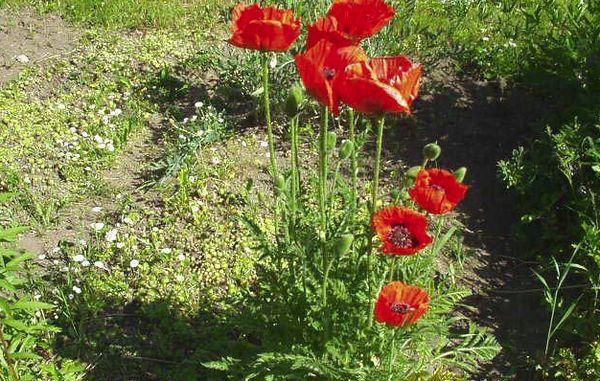
Autumn
Autumn planting is the most preferred option. At the same time, plants grow stronger and bloom faster.
Watering
Poppies are resistant to drought, so they do not need special watering conditions. At the very beginning of the growing season, flowers should be watered twice a week.
Fertilizer
Growth is positively influenced by feeding the plant with Kemir Universal's solution, as well as feeding with complex fertilizers during flowering.
Transfer
Do not replant garden poppies. The plant does not take root in seedlings and may die.
Pruning
The plant does not need regular pruning, but after flowering, it is worth removing dead leaf plates in order to preserve their appearance.
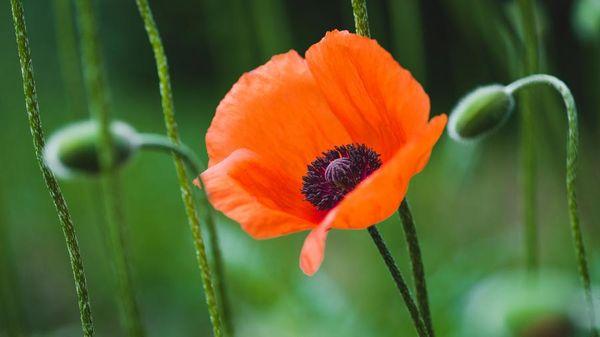
Wintering
Faded annuals should be removed from the garden before winter. Perennial specimens - cut to the level of the garden. In areas with a cold winter climate, the beds should be covered with spruce branches.
After flowering
For perennial plants, after they have faded, dried stems and leaves should be cut off. The ground part of the plant is cut off near the ground.
Diseases and pests
Poppies are susceptible to fungal and bacterial diseases, as well as to attack by pests.
Root rot
Root rot is a fungal disease that affects many horticultural crops. Because of its action, plant tissues begin to rot. To prevent the formation of rot, the seeds should be treated with potassium permanganate, and the soil should be disinfected with bleach.
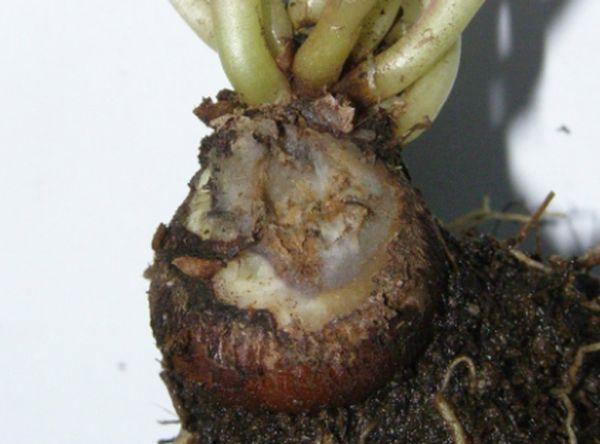
Powdery mildew
Powdery mildew is the greatest danger to poppy. It is characterized by the appearance of a white coating on the stems and leaves and leads the plant to death. It is treated with a solution of copper oxychloride.
Black spot fungus
An indicator of damage is the appearance of dark spots between the veins of the leaves. Severely affected plants die before seed formation.
Aphid
An insect that feeds on plant juices is a dangerous pest. In addition, it is capable of spreading plant diseases and causing gall-like formations.
Spider mite
A harmful mite that infects almost all types of land crops. It bites through plant cells and feeds on plant sap. Does not tolerate high humidity, therefore, to prevent its appearance, plants should be sprayed with warm water.
Possible difficulties
The main difficulties in growing garden poppies can be: difficulties in providing the soil with the right amount of moisture and nutrients, lack of care, improper growing area, and dense planting of poppies.
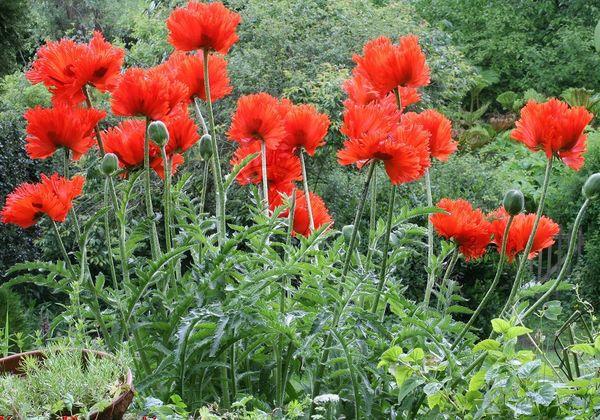
Increased soil moisture
Poppy grows well on unsaturated, refined soils, but poorly tolerates excessive moisture, therefore, in order to avoid the death of plants, water stagnation at the roots should not be allowed.
Lack of nutrients in the soil
The culture requires a refined soil. Grows slowly when nutrients are insufficient, flowers can grow small and not bright enough.
Dense planting
If planted too tightly, the flowers will grow small, which will affect the appearance of the garden.
Poor care
Withered flowers must be removed in a timely manner, otherwise seed pods will appear, and the bush will stop blooming. Pruning will extend the flowering cycle of the poppy.
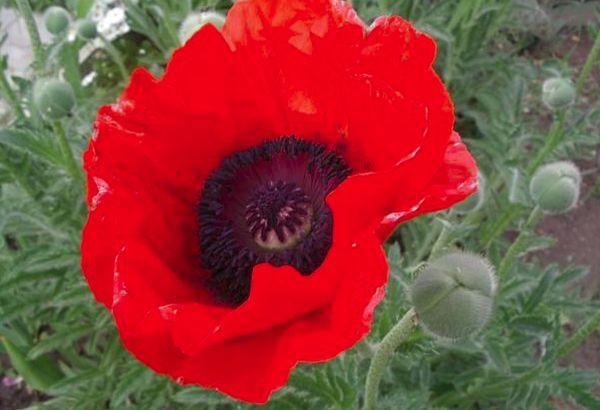
The wrong place
Poppy is a light-loving crop, so planting it in the shade will result in it not blooming due to lack of sunlight.
Collection and storage of seeds
The time to harvest the seeds comes after the flowering period, when the pods turn yellowish. The seeds should be stored in a cool place.
Reproduction
Poppy propagates by seed method. After a single planting of the plant on the site, it is enough to leave a couple of boxes on the bush when collecting, and the next season the plants will germinate again.
Reviews
According to most gardeners, poppies are an excellent decoration for any summer cottage and perform a decorative function better than any other culture, while being completely unpretentious in terms of care.
